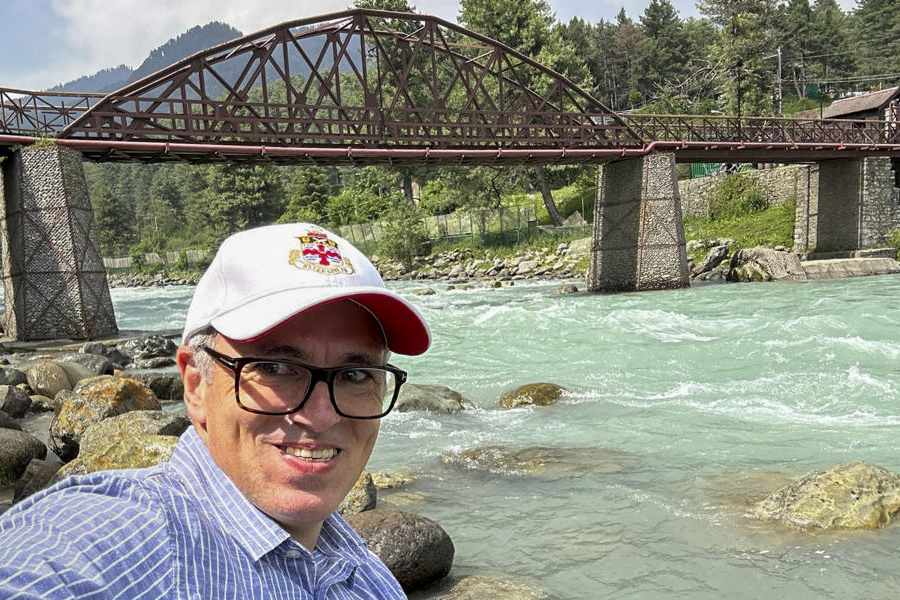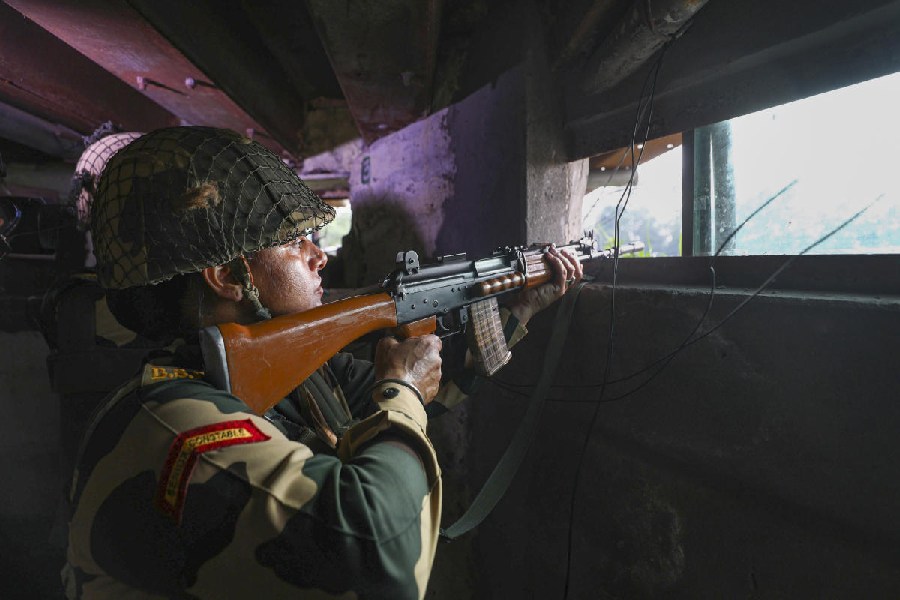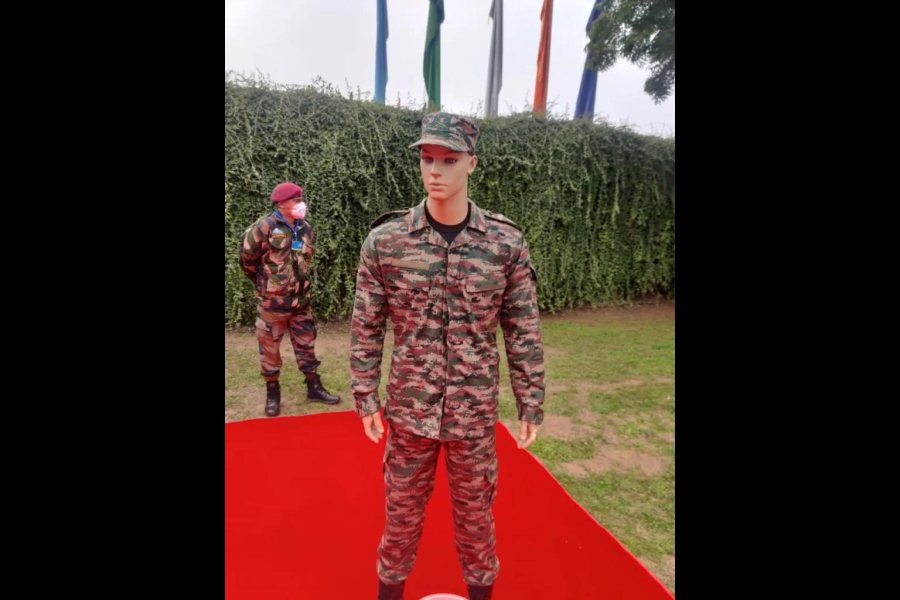What does a mountaineer do when he is within striking distance of Everest but realises he is running out of oxygen?
Satyarup Siddhanta, who stood on top of the world on May 21, recounts to Metro how walking on thin ice assumes a whole new meaning with the summit a step away


When he reached the summit, he forgot his entire struggle to get there. Satyarup Siddhanta wasn’t thinking of the constant fight against the elements every day to climb a little higher; the only thing that mattered was the reward of the last 15 minutes of his climb as he sniffed the rarefied air of Everest glory.
Satyarup and his team had been above an altitude of 8,000m when he started struggling to breathe despite oxygen support. The initial hunch was that he had run out of oxygen. In spite of being breathless, he had continued to climb for about 30 minutes. Now he couldn’t. “I was unable to move…. The others went past me. I sat down. I had no energy. My body had given up,” he recalled.
Satyarup called out to Purba Sherpa for assistance. Purba said the indicator on the climber’s cylinder showed oxygen was flowing to his mask. Unconvinced, Satyarup took off his mask and started breathing the air.
Then panic struck. Above 8,000m, the human body generally fails to acclimatise. Satyarup was in the “death zone”.
There was also a chance that the flow of oxygen was blocked at the end of the cylinder. Whatever the problem, the 33-year-old climber could not bear it anymore.
In April 2015, Satyarup and his teammates had prepared to scale Everest, but the devastating Nepal earthquake and the avalanche that followed forced them back. Now he was a few minutes from glory.
Satyarup requested Purba to lend him his last oxygen cylinder.
The Sherpa refused.
Satyarup said: “I told him if I could stay alive almost without oxygen for about half an hour, he would be fine too.”
Purba was not so sure. What if he died?
Satyarup reasoned and pleaded with him some more. Purba finally agreed to stay without oxygen for half an hour.
With borrowed oxygen, Satyarup climbed the world’s highest peak on the afternoon of May 21. “After reaching the top of the world, I forgot my entire struggle. I stopped thinking. All I did was absorb the energy to see the view and register it in my mind’s camera. I was thinking about my parents, my brother and all the well-wishers without whom I could not have scaled Everest,” he said.
Luckily for the team, it also became sunny at the top just then and Purba ascended with a piece of good news. The oxygen cylinder was miraculously working again.
All seemed well at the top of the world.
Guide & climber
Satyarup later said he too had wondered what would have happened if the Sherpa had become ill without oxygen, though he knew that the mountain guides are always better acclimatised than the climbers who hire them.
He decided not to linger on the summit and go back to Purba and return the cylinder, but the Sherpa himself climbed up and gave him the good news.
Up in the mountains where the elements reign supreme, survival can be a humbling experience. Sherpas, a mountain community scattered over the Darjeeling hills, Sikkim and parts of Nepal, make a living by assisting mountaineers to scale some of the world’s highest peaks in the eastern Himalayas.
Some Sherpas are mountaineers in their own right, like Jamling Tenzing Sherpa, the son of Tenzing Norgay who scaled the Everest with Edmund Hillary in 1953.
Jamling, himself an Everester, said: “Most Sherpas will do anything to get their clients to the summit.”
He cited his own experience of May 10, 1996, when he and a team of Sherpas in the death zone “had to change our plans to go for a rescue expedition. That day, nine climbers from various countries died in a snow blizzard. You don’t think much if you have to save lives,” he said.
Basanta Singha Roy, who scaled the Everest in 2010 and is one of Satyarup’s inspirations, however, had a word of caution for climbers too.

He said it was “almost impossible for a Sherpa to die without oxygen as his body knows how to make good use of it. The Sherpa regulates the mountaineer’s oxygen supply so that the climber never runs out of it.” For a climber, the Sherpa is the guide and the last word.
“The Sherpa is the best judge of a situation. Be it oxygen deficiency, immunity issues or fitness, the Sherpa must advise the climber. The climber should listen to him,” Singha Roy said.
After coming so far, the final struggle without oxygen was “a near-death experience”, Satyarup said. “But I said to myself I will have to live. I cannot die.”
Cost of conquest
After he reached the peak and celebrated, Satyarup started feeling excessively tired and sleepy. “While going down there was a rope I could hold. I was so tired I fell asleep holding the rope.” He then told the head Sherpa, Pemba, to help him. “I would not be able move without him, I told him.”
Satyarup had a pouch of honey in his pocket. He gulped that for an energy boost.
“While descending, I saw some stones. I remembered that some of my family members had requested me to bring some stones from the Everest.” When he bent down to pick up some of them, his DeLorme machine, a two-way satellite communication device, rolled down, cutting the climber’s contact with his family for good. “I could not retrieve it.”
Satyarup, a techie who grew up in Behrampore and now works in Bangalore, was with three other climbers from Bengal — Moloy Mukherjee from Howrah, Ramesh Rai from Barasat and Rudraprasad Halder from Sonarpur.
It was the second stab at Everest conquest for all four after they had to return from the Base Camp last year.
Satyarup’s ambition is to scale the highest peaks in each continent. With Everest clinched, it’s six down. Mt Vinson Massif in Antarctica remains.
The techie had quit his job ahead of his aborted Everest expedition last year. On returning, he took up two jobs to clear debts he had run up because of the expedition costs. He worked from 9am to 1pm in one company and from 2pm to 10.30pm in another. He returned home at 11.45pm, slept fewer hours and kept a personal trainer for six days a week. He also ran 7-10km everyday.
As part of the drill for his second shot at Everest, he and his team thrice negotiated the Khumbu Icefall, a tortuous stretch between the Base Camp and Camp I that has at least 20 crevasses. Falling into one means death. Satyarup described the experience as interesting, dangerous and beautiful at the same time.
Climbers do a to-and-fro routine between the Base Camp and Camp III for at least 20 days before making the final push for the summit from Camp IV. The routine is somewhat like this: Base Camp to Camp I, a night stay there and back to Base Camp. Same for Camp II and Camp III. This goes on till the climber feels s/he is acclimatised enough to make the final push.
The mountaineers stay at every camp so that the body produces a higher number of red blood cells and becomes more capable of circulating oxygen. They return to lower heights for better oxygen supply and energy.
During one such to-and-fro session from Camp I to II, the strong sun made Satyarup tired. There were crevasses all over. The top of one of the crevasses was like a bridge. There were also safety ropes to hold.
“We had to jump over the crevasse. But I was tired, so I halted before jumping. When I was waiting, my right leg slipped and went inside the crevasse. As I put pressure on my left leg, the whole thing collapsed under my foot. I fell into the crevasse and was hanging by a rope tied to a carabiner,” Satyarup said.
Two of Satyarup’s friends were behind him. He stayed hanging in there for about 15 minutes. Nobody realised he was missing.
“While I was hanging by the rope, instead of panicking I tried to absorb the beauty of the crevasse, its smooth blue ice,” he said.
Teammate Moloy first saw Satyarup. “How did you slip?” he shouted, looking shocked. He was rescued with a pulley system.
Death zone
Two days before summiting, the team was on its way to Camp III, when Satyarup saw a Sherpa hurtling down. “I was stunned,” he said.
Pemba, the head Sherpa, told him if a safety rope was used, such accidents could be avoided. “But his words did not give me comfort or peace of mind. For the first time, I had seen such an accident,” Satyarup said.
This was not the last accident the team saw.
On the way up from Camp IV, Satyarup said he saw five or six climbers sitting on a slope.
“Suddenly, one of them fell. The man was just next to me. I saw him falling in front of my eyes. I realised if someone fell on me, I would die as well. I asked our head Sherpa ‘will the man live’?”
Pemba didn’t answer. He paused and said: “‘Please tie your safety rope’. I understood that a slight mistake would now lead to death.”
While descending, the team saw a climber being carried away by several others. Days later after he reached Camp II, which is considered a safe zone, a Sherpa told him: “The man you saw being carried away was Subhash Paul.”
Paul died and his body was brought back to Calcutta last week. Two of Paul’s teammates, Goutam Ghosh and Paresh Nath, have not been found. Sherpas have reported that their bodies were seen above the altitude of 8,000m. But the climbing season is over, so the bodies will lie embalmed in snow.
The fourth member in Paul’s team, Sunita Hazra, is recovering from frost bite. She said she survived on the way down after summiting because a British mountaineer lent her his oxygen cylinder so she could be taken to safety.
Satyarup said he met Paul on this expedition and they became friends. He also knew Paresh Nath from before. “I was close to Pareshda. I also got the news that Rajeev Bhattacharya had died (while descending from Dhaulagiri). The news saddened us so much that we did not celebrate,” he said.
Singha Roy said while climbing Dhaulagiri (at 8,167m) in Nepal in 2013, he had run out of oxygen and lay in the snow for 15 hours. “I was bereft of all energy. I was waiting for death till a rescue team airlifted me.”
Gift of the mountain
Satyarup said he experienced two extremes during his ascent. “We saw several people die. Though we were successful, we could have met their fate,” he said.
But he also witnessed spectacular beauty. He spoke of a moment when the team had reached a point that climbers call the Everest balcony at 8,100m. It’s a small platform of ice from where it takes an average of four hours to the summit. “My Sherpa and I were the first to reach the balcony, but we allowed some foreigners to go ahead of us so they would create footsteps that we could follow. The wind was blowing at a high speed and I could not see with my left eye. It was snow blindness. I put on my goggles. It was a moonlit night. What I saw left me awestruck. The most beautiful moment was when I was standing on the balcony. There was Tibet on one side, Nepal on the other. It was like dreamland,” Satyarup gushed.










